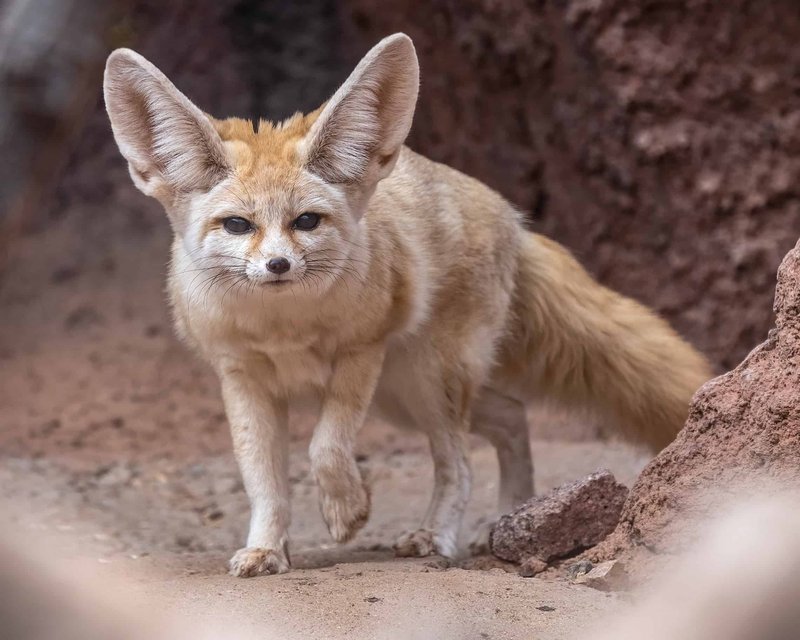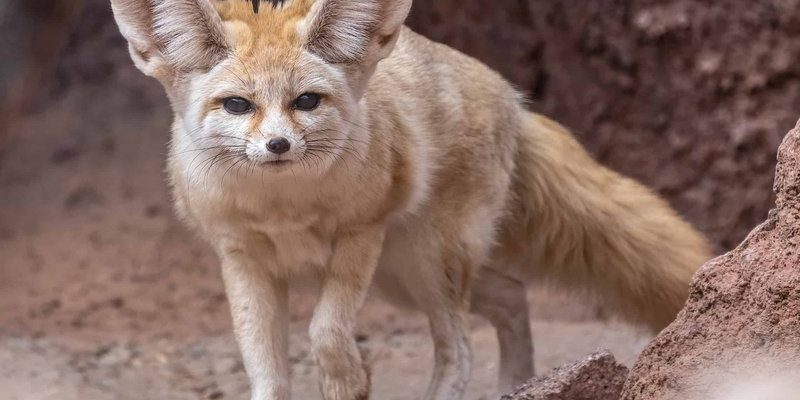
Imagine a creature that looks like it just walked out of a cartoon—a Fennec Fox. With its large ears and tiny frame, this little marvel of the desert can easily charm anyone who lays eyes on it. The Fennec Fox, found in the sandy landscapes of North Africa, is not only cute but also a fascinating example of adaptation. These foxes have evolved to thrive in one of the harshest environments on Earth.
These small mammals are known for their vibrant personalities and unique characteristics. Have you ever seen those giant ears? They serve a purpose beyond just looking adorable. Soft and furry, they help the Fennec Fox cool down in the scorching desert heat. If you think about it, those ears are like built-in air conditioners! But there’s more to this creature than just its cute exterior.
Let’s dive deeper into the world of the Fennec Fox. We’ll explore its habitat, diet, behavior, and why it’s such a beloved animal around the globe. Whether you’re a wildlife enthusiast or just curious about these little guys, there’s a lot to learn!
Fennec Fox Characteristics
The Fennec Fox is the smallest species of fox and is easily recognizable due to its distinctive features. On average, they weigh about 2 to 3.5 pounds and stand around 8 to 10 inches tall. One of their most remarkable traits is their large ears, which can be as long as 6 inches. These ears not only contribute to their adorable appearance but play a vital role in regulating body temperature and locating prey.
Despite their small size, Fennec Foxes are surprisingly agile. They have long, nimble legs that allow them to run at speeds up to 20 miles per hour. This speed helps them evade predators and catch small animals. Their fur is typically a sandy color, which helps them blend in with their desert surroundings, providing excellent camouflage from both predators and prey alike.
The Fennec Fox’s eyes are another striking feature. They have beautiful, dark brown eyes that help them see well at night, as they are primarily nocturnal. You might even say they have the perfect night vision! Plus, their keen sense of hearing allows them to detect sounds from far away, making them efficient hunters in their natural habitat.
Habitat and Distribution
Fennec Foxes are native to the sandy deserts of North Africa, particularly in regions like the Sahara Desert. You may be surprised to know that they prefer arid environments with minimal vegetation. Their burrows, which can be up to 10 feet deep, provide them with shelter and protection from the harsh sun. These underground homes are cool during the day and warm at night, making them perfect for survival in extreme temperatures.
While they thrive in the desert, Fennec Foxes are quite adaptable. You might find them in areas with sparse shrubs and rocks, where they can hide from predators and hunt for food. Their ability to dig and create burrows means they can occupy a variety of habitats as long as there’s enough shelter and food available.
Interestingly, Fennec Foxes have a social structure that revolves around family groups. They often live in small family units consisting of a breeding pair and their offspring. This social behavior is essential for their survival in the desert, as they work together to defend their territory and raise their young.
Diet and Feeding Habits
When it comes to food, Fennec Foxes are omnivores, which means they eat a variety of things. In the wild, their diet mainly consists of insects, small mammals, and plants. They have been known to snack on rodents, lizards, and even fruits when available. Their keen hearing helps them locate prey underground, where they dig to uncover tasty treats.
Fennec Foxes are known for their cunning hunting techniques. They often hunt at night when it’s cooler, using their acute senses to detect movement. You might see them pouncing on insects or swiftly digging in the sand to catch their next meal. It’s a survival strategy that showcases their skills as hunters in an environment where every meal counts.
Behavior and Social Structure
One of the most intriguing aspects of the Fennec Fox is its social behavior. They are generally very social animals and live in family groups or small packs. These packs are usually composed of a mated pair and their offspring. They communicate through a range of vocalizations, including barks, whines, and growls. You could say they have quite the chatty personality!
These foxes are also known for their playful nature. Watching them play is like observing a bunch of puppies; they love to chase each other, dig in the sand, and explore their surroundings. This playful behavior is crucial for young foxes as it helps them develop the skills they’ll need to survive.
Fennec Foxes are also quite territorial. They use markings to indicate their presence and protect their burrows from intruders. This territorial behavior helps maintain social structures within their packs and ensures they have enough resources in their environment.
Conservation Status
Fortunately, Fennec Foxes are not currently considered endangered. Their populations are relatively stable, and they adapt well to their desert habitats. However, they do face threats from habitat loss due to human development and climate change. As deserts continue to be impacted by these factors, the future of the Fennec Fox could be at risk.
Conservation efforts are crucial to maintaining their populations. Organizations work to protect their habitats and educate the public about the importance of these charming creatures. Additionally, in some regions, these foxes are hunted for their fur, which poses another threat to their survival.
To help protect Fennec Foxes, it’s essential to support conservation programs and spread awareness about their needs. Every little bit helps, and by taking steps to protect their environment, we can ensure that these adorable foxes continue to thrive in the wild.
Fun Facts About Fennec Foxes
- The Fennec Fox is the smallest fox species in the world.
- With ears measuring up to 6 inches long, they have the largest ears compared to their body size of any fox.
- Fennec Foxes can leap up to 3 feet in the air, which helps them catch insects.
- They have a double-layered coat that insulates them against the extreme temperatures of the desert.
- Fennec Foxes can hear a mouse squeak from over 100 feet away!
FAQ
Where do Fennec Foxes live?
Fennec Foxes are primarily found in the Sahara Desert and other arid regions of North Africa. They thrive in sandy environments where they can dig burrows to escape the heat and hide from predators.
What do Fennec Foxes eat?
These tiny foxes have an omnivorous diet, mainly consisting of insects, small mammals, and plants. They have a unique ability to survive without drinking water by obtaining moisture from their food.
Are Fennec Foxes friendly?
In the wild, Fennec Foxes are social animals that live in family groups. While they can form bonds with humans in captivity, they are still wild animals and have specific needs that can be challenging to meet in a domestic environment.
How fast can a Fennec Fox run?
Fennec Foxes can run at speeds of up to 20 miles per hour. This speed helps them evade predators and catch their prey, making them agile hunters in the desert.
What adaptations do Fennec Foxes have for desert life?
Fennec Foxes have several adaptations for survival in the desert, including large ears for cooling down, a sandy-colored coat for camouflage, and the ability to go long periods without water by getting moisture from their food.
How do Fennec Foxes communicate?
These foxes are known for their vocalizations, which include barks, whines, and growls. They use these sounds to communicate with family members and establish territory.
Are Fennec Foxes endangered?
Currently, Fennec Foxes are not considered endangered, but they do face threats from habitat loss and hunting. Conservation efforts are in place to protect their populations and habitats.
Can Fennec Foxes be kept as pets?
While Fennec Foxes can be kept as pets in some places, they are still wild animals with specific needs. Prospective owners should thoroughly research their care requirements and legal regulations before considering adopting one.
What are the Fennec Fox’s natural predators?
In the wild, Fennec Foxes face threats from larger predators such as birds of prey, snakes, and other carnivores. Their agility and burrowing behavior help them evade danger.
How long do Fennec Foxes live?
In the wild, Fennec Foxes typically live for about 10 to 12 years. In captivity, with proper care and a suitable environment, they can live longer, sometimes reaching ages of 14 years or more.
Do Fennec Foxes have any unique behaviors?
Fennec Foxes are known for their playful nature and agility. They engage in play fights, chase each other, and dig in the sand. This behavior is essential for their social bonding and skill development.

